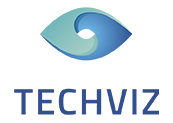
Are you interested in incorporating immersive training into your learning programs? If so, choosing the right 3D engine is crucial for creating realistic and engaging virtual environments. Immersive training, powered by virtual and mixed reality technologies, allows trainees to experience lifelike situations in a 360° learning environment. By blurring the line between the virtual and actual world, trainees can interact with their surroundings, use simulated tools and machinery, and learn through personal experience. When it comes to selecting a 3D engine for immersive training, Unity and Unreal have been the go-to choices due to their market dominance and graphics capabilities. However, recent pricing changes have caused uncertainty, leading to the emergence of the Godot open-source game engine. Additionally, there are alternative solutions like TechViz XR PubliShare that allow for recording XR experiences directly from CAD 3D models. Ultimately, the complexity of your training scenario will determine whether a 3D engine is necessary or if other options, such as working directly from a 3D model, are more suitable. Consider these factors carefully to choose the right 3D engine for your immersive training needs.
What is immersive training?
Immersive Training is an innovative method using Virtual or Mixed Reality technologies, simulating lifelike situations for effective training purposes. Trainees are completely immersed in a 360° learning environment, where they can see and possibly hear and interact with their surroundings, blurring the line between virtual and actual world. Equipped with a headset and controllers, trainees have the freedom to explore a 3D virtual setting, interact with simulated real-world tools, machinery. Such trainings are usually scenarized or gamified for self-administered sessions. They can also be guided training sessions with an instructor guiding the trainee through a 3-model, using tools such as TechViz.
Either way, the true value of Virtual Reality lies in its ability to make previously challenging, costly, and dangerous workplace scenarios, such as emergency protocols and disaster preparedness, hazardous material spills, and realistic heights training, much more practical, cost-effective, and safe through immersive simulations. By combining these simulations with engaging story narratives and expert-developed learning curriculum, trainees are able to learn through personal experience, resulting in improved learning outcomes. Indeed, the strongest proof that virtual reality can make good for the education system is the way the human brain works. The fact is that the brain tends to remember 10% of what it reads, 20% of what it hears, and 90% of what it does or simulates.
Which 3D-engine is best to develop immersive training?
Most VR trainings use 3D techniques derived from video games. One of the cores of such techniques is the 3D-engine. It is used to render the environment in 3D and sometimes to add collision detection or physics. Until recently, the choice of a 3D-engine for immersive training often boiled down to a choice between Unity and Unreal, the two big names in video games.
Regarding the requirement for VR, both are similar in many ways and have a few specific advantages and drawbacks. Unity is bigger in terms of market share especially in the non-gaming community. This means there’s a huge developer network to rely on for tips and support whenever you need help, as well as many internet tutorials and examples to draw from. Unity also has a big library of visual assets.
Unreal, on the other hand, is more open. With access to the full code at all times, seasoned developers can modify and update the source code as much as they like. It is also said to edge out Unity in terms of graphics realism.
What Unreal and Unity also have in common is the fact they have recently brought bad news for studios designing XR training in terms of pricing. Unity pricing announcements have caused a lot of uproar and back-and-forth from the company. Unreal’s adjustments have happened much more under the radar but they mean price increases for players outside the gaming industry, so they will directly impact those developing XR training.
All this has brought light upon a new kid in towns, namely the Godot open-source game engine. It is a rather generalist game engine. It has received two grants from Meta’s Reality Labs, in 2020 and 2021 to support work on the XR capabilities of the engine.
In the end, do you need a 3D-engine at all?
Unity and Unreal seem to have entered an era of turbulence, with their business model being reshuffled. As for Godot, Meta’s involvement brings as many questions as it brings answers. All this creates a lot of uncertainty for studios designing immersive trainings, and nothing is as bad for business as uncertainty. So, is there a way around 3D game engines to create immersive training?
The good news is that the answer is yes. There are solutions such as TechViz XR PubliShare that enable to record an XR experience directly from the open GL graphic stream of CAD 3D models. It works natively from all the most commonly used applications, such as Catia, Solidworks or Revit for instance. Coupled with an authoring tool, it is possible to design simple training scenarios. It is perfectly suited for training use cases that are close to an existing 3D-model: for instance, to teach how to operate a piece of equipment or the maintenance process of a machinery.
In conclusion, the first question to ask before choosing a 3D-engine for XR training is: how complex is my training scenario? If the answer is “not very much”, then you can probably do without a 3D-engine and building the training directly from the 3D model. If the answer is “it is quite a complex game play”, then a 3D-engine from a video game is probably necessary.






 Back to Blog
Back to Blog




